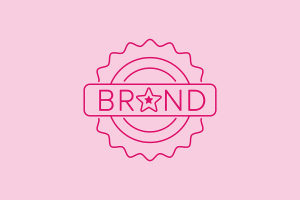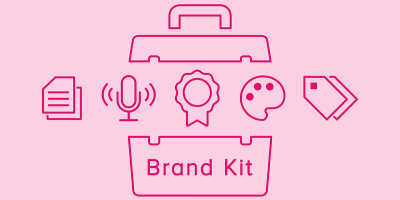
Crafting Comprehensive Brand Guidelines: A Blueprint for Consistency, Growth, and Relevance

Your brand is the cornerstone of your company’s identity. It transcends mere visuals or text, encapsulating the essence of how you engage with and captivate your audience. From the emblematic logo to every customer interaction, your brand is the embodiment of your organization’s identity.
In a fiercely competitive market, it is imperative for consumers to effortlessly grasp who your company is and what it offers. Brand consistency instills confidence in consumers, reassuring them of the reliability and predictability of their interactions with your organization. But how can you ensure these consistent experiences that foster brand loyalty? The answer lies in developing robust brand guidelines.
Understanding Brand Guidelines
Brand guidelines are the blueprint for maintaining brand consistency across various channels. They establish the framework for visual, verbal, and written communication, laying the foundation for a resilient brand that can flourish and evolve. |
Key Components of Brand Guidelines
Brand guidelines encompass a wide array of elements, including standardized color and font usage, logo application, tone and voice, image styles, graphics usage, brand sentiment, and more. While they may initially seem restrictive, these guidelines actually foster creativity by providing a structured framework within which teams can innovate, rather than starting from scratch each time.
Although brand guidelines will vary from one organization to another, they typically include:
- Logo Usage Guidance: Clear instructions on how and where logos can be used.
- Brand Essence and Characteristics: A definition of the core attributes and values of the brand.
- Writing and Copy Guidelines: Including tone, voice, and grammar rules.
- Links to Brand Resources: Access to additional brand materials and contact information for the brand team.
- Visual Expression Overview: Guidelines on the use of visual elements.
- Typography Rules: Specifications for fonts, type sizes, and line heights.
- Illustration, Icon, and Photographic Style Overview: Standards for visual content.
- Color Palettes: Defined color schemes for brand consistency.
- Grid Templates and White-Space Rules: Layout guidelines for design elements.
The Importance of Brand Guidelines
Brand guidelines are crucial in defining who your brand is and how it presents itself. Iconic brands don’t emerge by accident; they have a clear, cohesive, and seamless experience across every touchpoint. This ability to deliver an omnichannel brand experience distinguishes them from competitors.
Documenting your brand guidelines safeguards your brand from misinterpretation, misunderstanding, and inconsistency. Moreover, creating brand guidelines helps clarify uncertainties and phase out outdated practices.
Once established, brand guidelines should be treated as a dynamic, evolving part of your business. As your company grows, develops new products, and reaches more customers, your brand guidelines should adapt accordingly.
In today's fast-paced digital landscape, ensuring that your brand remains relevant is a critical challenge. Brand guidelines not only provide consistency but also ensure that your brand's messaging and visual identity stay aligned with current market trends and consumer expectations. By regularly updating your brand guidelines, you can address the pain point of topic relevance, ensuring that your brand remains fresh, engaging, and in tune with the evolving needs of your audience. This proactive approach helps maintain your brand's position as a leader in your industry, fostering deeper connections with your audience and driving sustained growth.
Steps to Create Brand Guidelines
The timeline for developing brand guidelines is unique to each company, depending on resources, current structure, and brand goals. Whether you’re creating brand guidelines for a new or existing organization, both require a clear understanding of what your brand represents. The primary difference lies in applying the new standards when relaunching your brand.
Creating brand guidelines for a new company offers a blank canvas, which can be both exhilarating and daunting. Establishing guidelines for an existing company, on the other hand, provides structure to current standards or may be part of a brand redesign.
Updating an existing brand presents the challenge of revising all existing brand touchpoints to reflect the new guidelines. However, with detailed brand guidelines, you’ll know what needs to be updated, when, and how.
So, where do you start?
1. Clarify your brand essence
Begin by defining your brand essence, which encompasses the key characteristics of your company and embraces its mission, vision, values, and purpose. It defines who you are, what you stand for, and how you want your audience to feel when interacting with your brand. Your brand essence guides more tangible elements like visual, written, and verbal style, providing your teams with a reference point for every project.
Consider how you want someone to feel after interacting with your brand. What are your consistent actions? What do you avoid? Understanding the key characteristics of your brand helps you deliver consistent experiences and connect with consumers in a way that leaves a positive, lasting impression.
2. Develop the rules
Establish rules for the use of brand elements, including:
- Logos: Guidelines on acceptable logos, their application, and placement on branded items.
- Typography: Specifications for the brand’s font, permissible fonts, and usage of bold and italics.
- Illustrations: Guidelines on when and why to use illustrations, and how they should interact with photography and text.
- Icons: Standards for acceptable icons, their size, and color requirements.
- Color: Definition of brand colors, their conveyed sentiment, and usage guidelines.
- Grids and white space: Instructions on item placement within a design and the strategic use of empty space.
These concrete standards ensure alignment in visual and written communication, providing the clarity needed to work efficiently and confidently.
3. Train People on Usage
Once your brand guidelines are developed, communicate them to your team. Plan an official launch to ensure everyone is aware of the changes and their rationale. To gain buy-in and adoption, make the launch exciting. Organize regular training sessions and make your guidelines easily accessible. This fosters a united internal front, keeping your brand approachable and top of mind.
Create a brand identity kit to share across the organization and with external partners. Include your brand guidelines, essential visual assets, and usage information. This provides teams and partners with easy access to the right logos, approved color palettes, and typography styles. Investing in a comprehensive brand identity kit is worthwhile for long-term brand consistency.
4. Plan for Growth and Change
Your brand is a dynamic entity, and so are your guidelines. As your business evolves, your guidelines must adapt. To implement changes consistently, assemble a team of marketers eager to grow with your brand. Start by strategically building your team and choose a competency framework to help them develop the necessary skills for the future.
Clear brand guidelines and a dynamic team will take you far, but you also need a centralized storage solution for all your brand assets. An accessible, flexible system makes it easy to keep your guidelines updated and manage all brand assets without hassle.
5. Adopt Technologies Supporting Brand Consistency
While visceral branding elements are crucial, technologies play a vital role in how the world experiences your brand digitally. A digital experience platform (DXP) is a modern solution for unifying technologies that power your brand’s digital experiences across various channels. Acquia DXP offers tools that work in tandem to maintain brand consistency wherever it’s displayed.
Acquia DAM and PIM: A digital asset management (DAM) system provides a centralized, secure place for assets like graphics, photos, videos, and documents. A product information management (PIM) system serves as a central hub for product descriptions and specifications. Having both DAM and PIM platforms (ideally integrated) is crucial for maintaining brand consistency.
Acquia Site Factory: Many brands manage multiple websites for different products, audiences, or subsidiaries. Site Factory allows you to create, manage, edit, and deploy multiple websites from one place, enforcing brand governance at a technical level.
Protect your brand with brand guidelines
Is providing a consistent and seamless customer experience a top priority for your business? Start by developing clear brand guidelines that give your teams the direction they need to build trust and loyalty with your audience at every touchpoint. With a defined plan and the right technologies to help manage it, your brand guidelines will bring clarity to your work and evolve with your organization’s success.
Whether it’s a platform like Acquia DAM to manage your brand assets or Acquia DXP to unify your brand’s digital experiences across channels, we’ve got you covered. Reach out, and we’ll help you elevate your brand to where you envision it.

